Watching a Blue Whale Get Vacuumed Is Surprisingly Satisfying
Even the ocean’s behemoths get a little dusty sometimes.
About once a year at New York’s American Museum of Natural History, the time comes again to scrub the whale. Specifically, the jaw-dropping, 21,000 pound, life-size model of a blue whale that hangs from the ceiling of the Irma and Paul Milstein Family Hall of Ocean Life.
The 94-foot long model was installed in 1969, and has been one of the museum’s most famous attractions ever since. Made to look as though it is “swimming” through the space, it is only attached at the arch of its back, which appears to graze the ceiling. This clever design hides a sturdy iron framework that runs throughout the model. The bulk of the beast is relatively light fiberglass and polyurethane. All of the technical details aside, it convincingly looks like a whale is floating in the middle of the room.
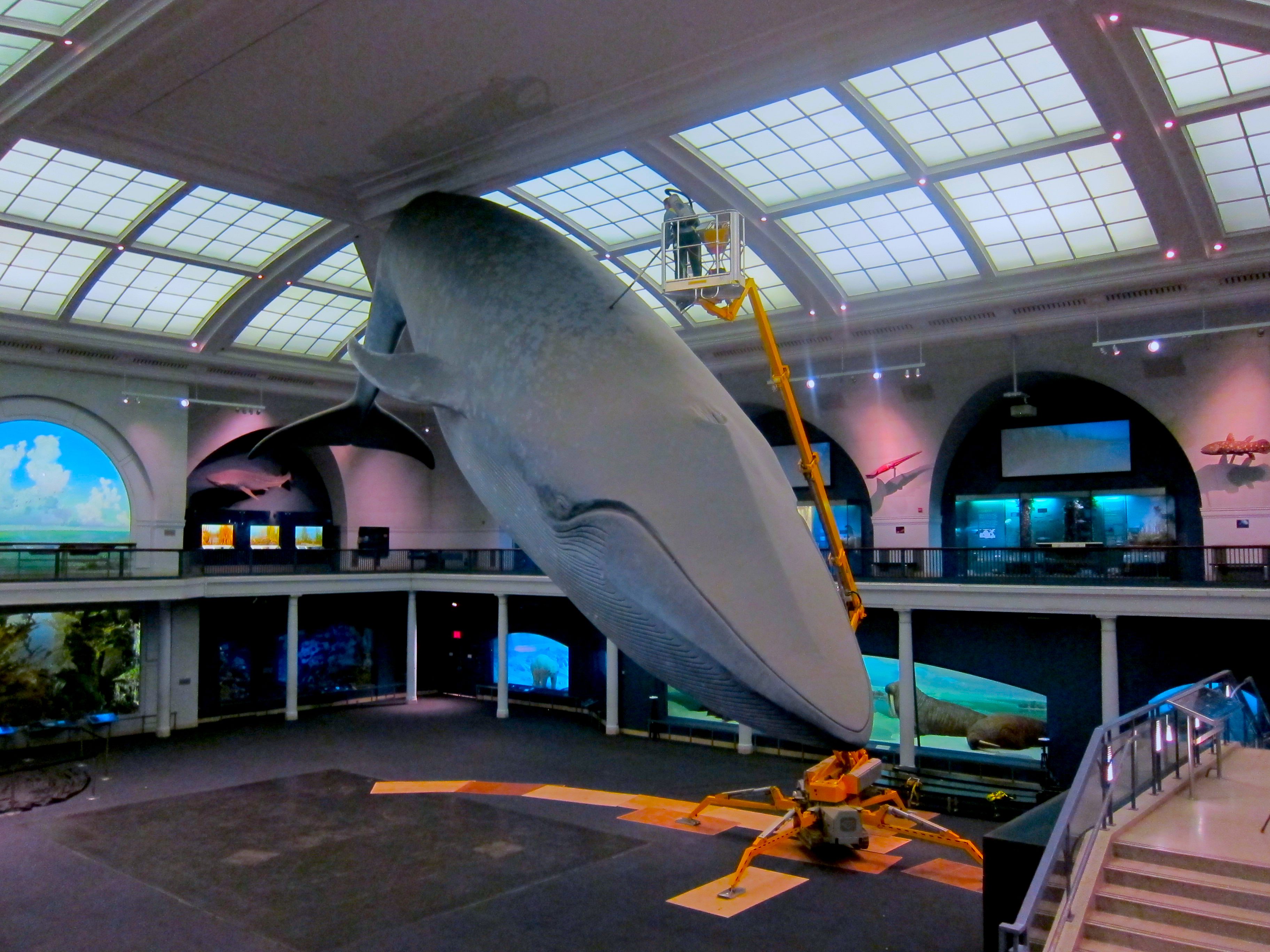
Prior to a renovation in 2003 that gave the whale a more accurate blue hue and replaced its bulging bug eyes with more natural ones (the original was based on dead specimens), the whale was a duller shade of gray. To this day, the whale takes on a grayer tone throughout the year as it get covered in a thin layer of crud. “Dust gets kicked up from all the visitors who come through here, and some of it settles on the whale,” says Dean Markosian, director of project management for the museum’s Department of Exhibition. And that’s why once each year, someone has to suit up and clean the thing.
-94bb3dca-eb09-4eab-b4fb-d717316adde6.webp)
Despite being almost 50 years old (young for its species, which can live to over 100), the blue whale is still sturdy, but during the cleaning, it is treated delicately nonetheless. “It’s not really delicate, but there is a paint treatment on there to get the right look,” says Markosian. “Really we only use a vacuum with a soft brush attachment on the end. That’s really the only tool we need.”
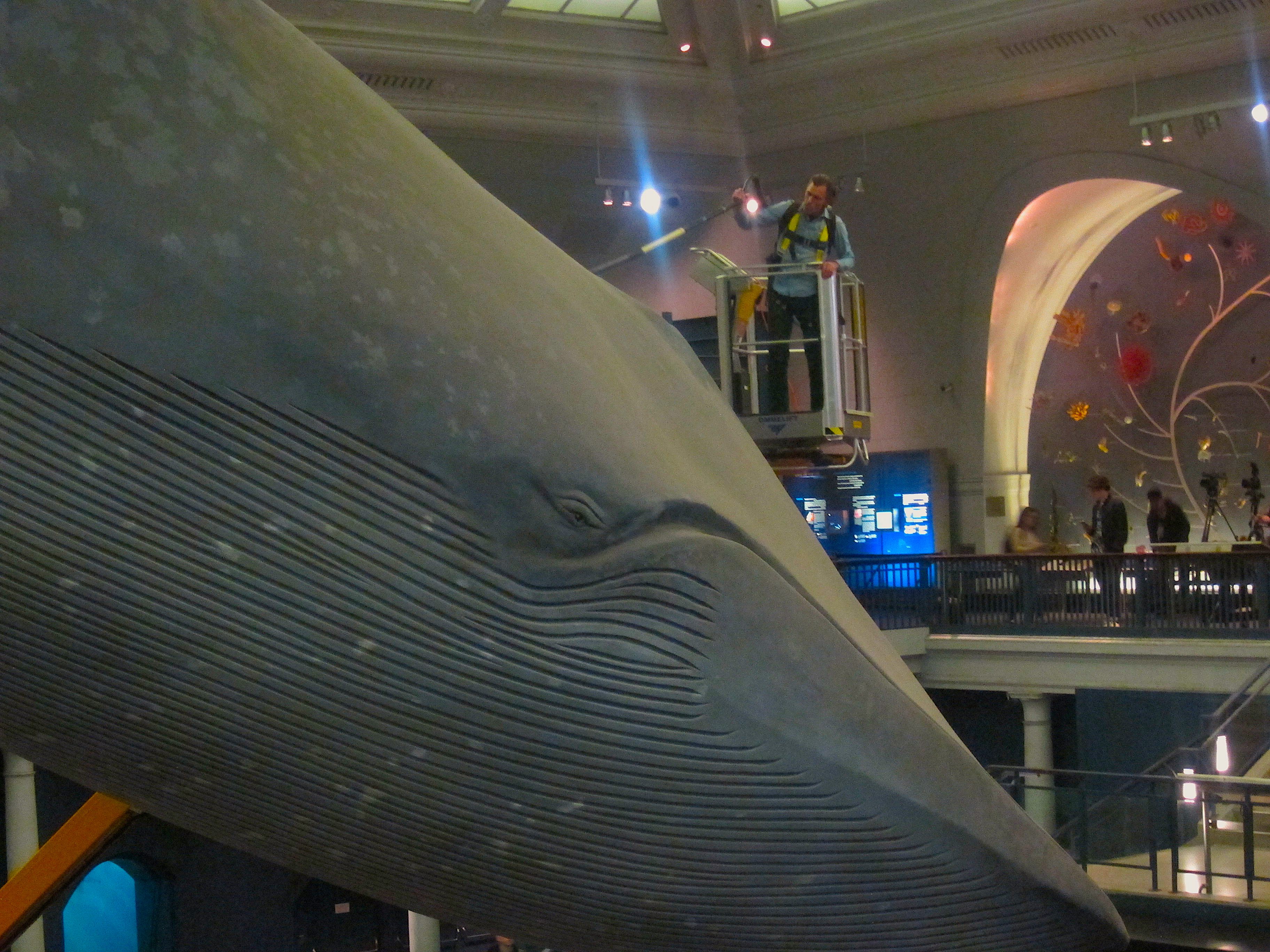
Even with the whale’s impressive surface area, the cleaning is carried out pretty much exclusively by one person equipped with a backpack vacuum and a cherry-picker lift. Moving around each part of the model, they are sure to get in all the nooks and crannies including under the fins, and in between all the ridges on its underside. As the vacuum passes over filthy spots, it sucks up the grime to reveal the vibrant, mottled paint job beneath. “The highest point is a bit tough to reach and the tail is a bit out of the way, but overall it’s just a question of covering all of the surface area, which there is a lot of,” says Markosian. It almost looks like the cleaner is repainting the model. And just like watching someone slowly cover a wall in paint, stroke after stroke, it is satisfyingly hypnotic. All told, it takes about two days to completely clean the whale, and not a drop of water is used.
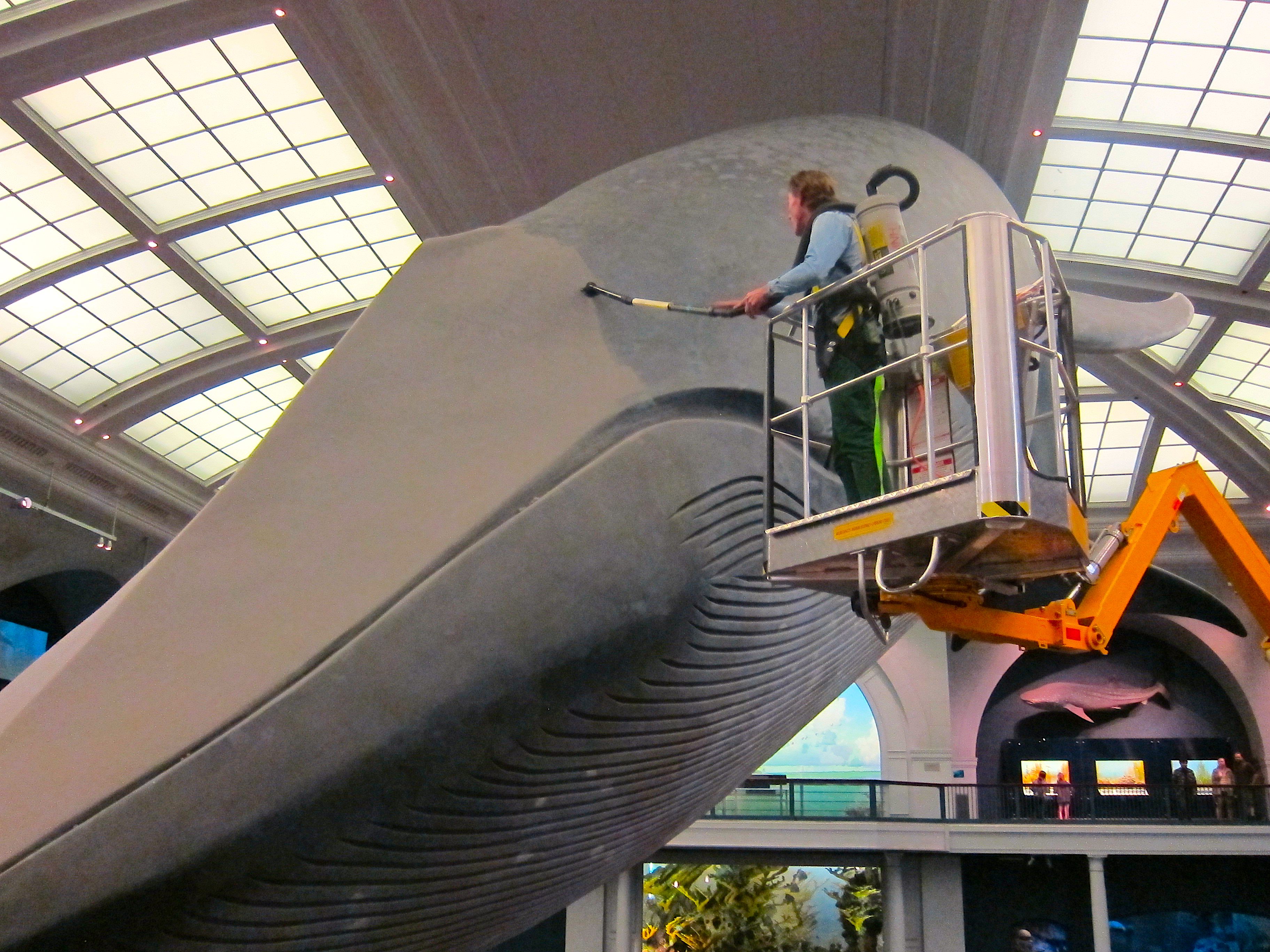
While the blue whale is the museum’s largest model, and cleaning it is no small thing, it may not even be the most difficult maintenance job in the museum. “Everything has its own challenges. Some of the dinosaur skeletons, which are also pretty large, have lots of surfaces, because of the ribs and vertebrae and all the individual bones, there’s lots of places you have to get to,” says Markosian.
Markosian says that the blue whale model doesn’t have an internal nickname or anything like that. But at least for today, everyone can call it “clean.”
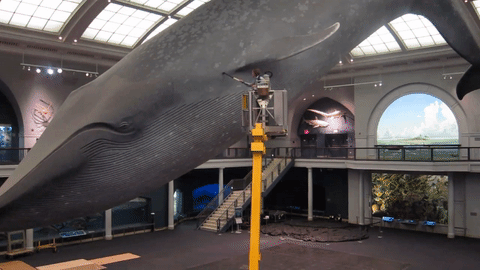



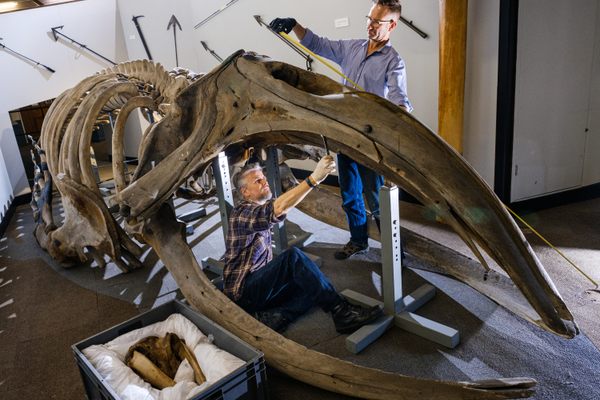
























Follow us on Twitter to get the latest on the world's hidden wonders.
Like us on Facebook to get the latest on the world's hidden wonders.
Follow us on Twitter Like us on Facebook